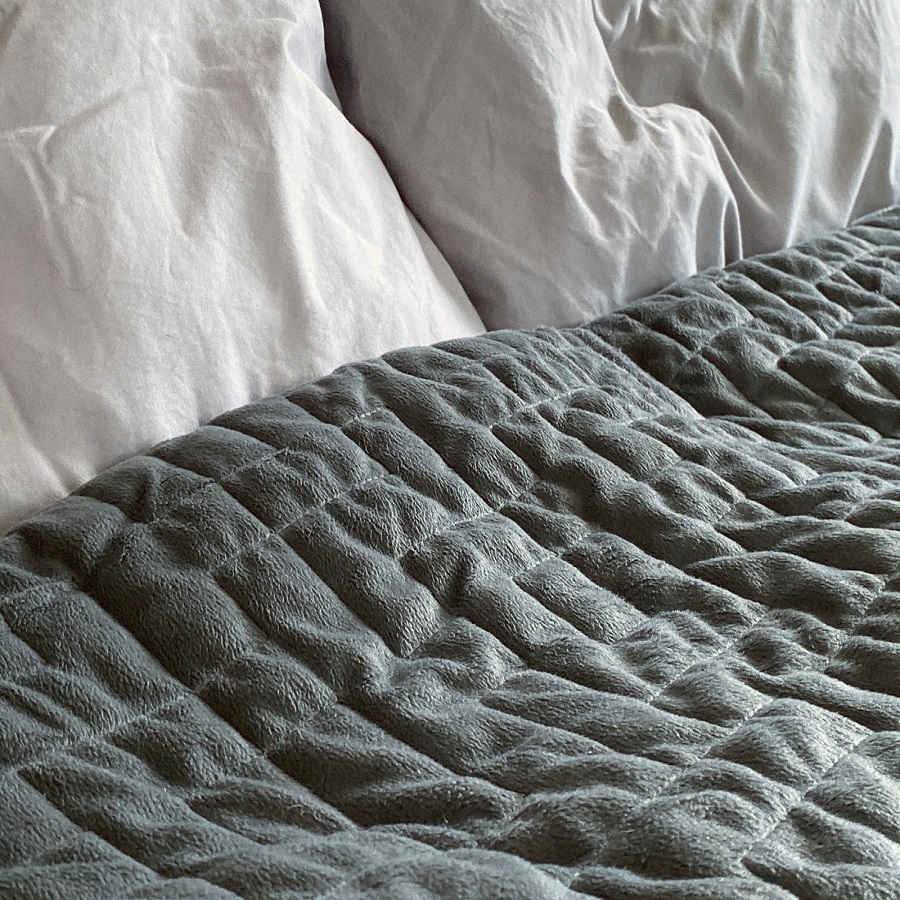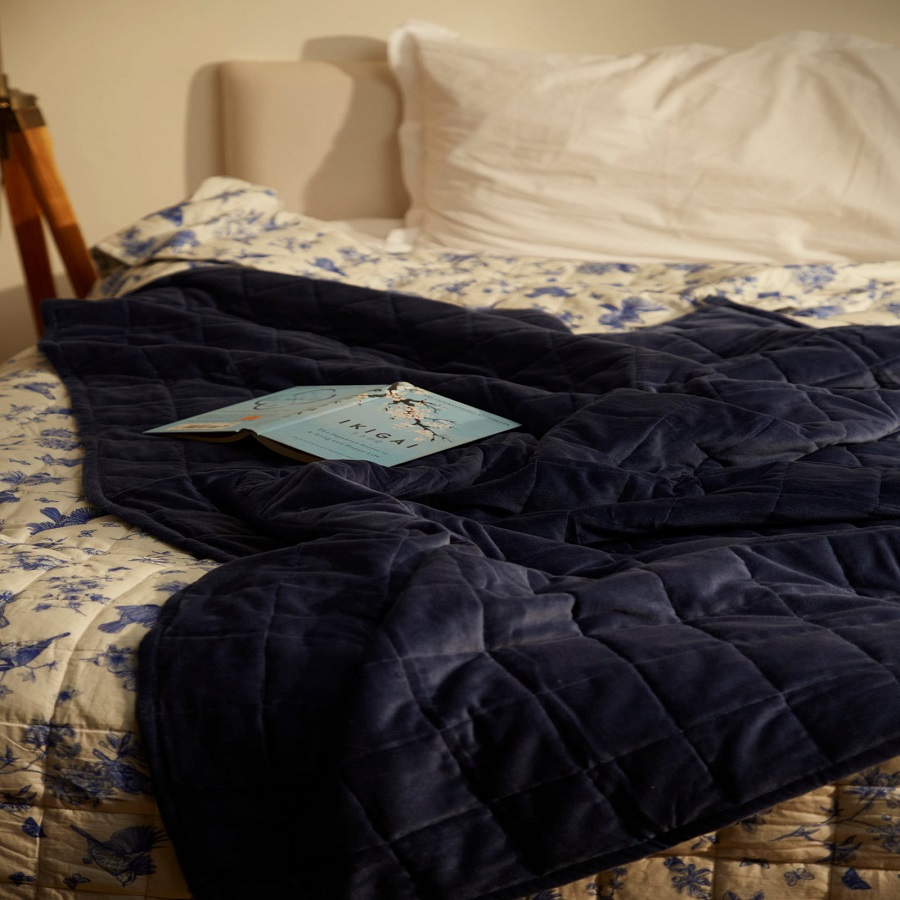Introduction
Weighted blankets have gained immense popularity for their ability to promote relaxation and improve sleep quality. These blankets, often filled with materials such as glass beads or plastic pellets, can provide comfort and security. However, they require special care when it comes to washing and drying. Improper drying practices can damage the fabric or the filling, reducing the blanket’s effectiveness. This ultimate guide will walk you through the best practices for safely drying your weighted blanket.

Understanding Your Weighted Blanket
Before diving into the drying process, it’s essential to understand the materials involved in your weighted blanket. Many are made from:
- Cotton: Breathable and easy to clean.
- Microfiber: Soft and plush but may retain heat.
- Bamboo: Eco-friendly and breathable, often hypoallergenic.
The filling also plays a critical role. Weighted blankets primarily use:
- Glass beads: Often provide a more even weight distribution and are quieter.
- Plastic pellets: Generally less expensive but can be bulkier.
Knowing these materials can help you select the best drying method.
Preparation: Before You Dry
Check the Care Label
Every weighted blanket comes with a care label that provides essential information regarding washing and drying. Always adhere to these instructions. If it specifies line drying or air drying, you should follow that advice to prevent damage.
Wash Carefully
To ensure your blanket is in good condition for drying:
- Machine Wash: If the care label permits machine washing, wash the blanket on a gentle cycle in cold water. Consider using a front-loading washer as top-loaders can be harsh on heavier items.
- Spot Clean: For minor stains, consider spot cleaning instead of a full wash to extend the blanket’s lifespan.
Remove Excess Water
After washing, avoid wringing or twisting the blanket. Instead, gently press the water out or use a high-spin cycle to remove excess water.
Drying Your Weighted Blanket: Different Methods
Tumble Drying
If the care label indicates that tumble drying is safe:
- Set to Low Heat: High temperatures can damage both the fabric and the filling. Always use a low heat setting.
- Include Dryer Balls: Adding a few dryer balls can help to evenly distribute the weight and prevent clumping of the filling.
- Monitor Regularly: Check on the blanket frequently to ensure it’s drying evenly and to prevent overheating.
- Use a Large Capacity Dryer: If possible, use a dryer with a larger drum to allow ample space for the blanket to tumble freely.
Air Drying
Air drying is often the safest option, especially for those unsure about machine drying.
- Hang it Up: Use a sturdy clothesline or hanger to hang the blanket. Ensure it’s well-secured to prevent it from falling.
- Flat Drying: If you don’t have enough space to hang the blanket, consider laying it flat on a clean, dry towel or mesh drying rack. This will help retain its shape and prevent any stretching.
- In a Well-Ventilated Area: Choose a spot with good airflow to speed up the drying process while preventing mildew or mold growth.
Tips for Successful Drying
- Do Not Expose to Direct Sunlight: While it’s crucial to dry your weighted blanket, avoid direct sunlight. Prolonged exposure can fade colors and degrade fabric quality.
- Rotate Occasionally: If air drying, flip the blanket occasionally to promote even drying.
- Check for Dryness: Ensure the blanket is entirely dry before using it again. Using a damp blanket can lead to mold and unpleasant odors.
- Consider Professional Cleaning: If your weighted blanket is particularly large or expensive, you may want to consider professional cleaning services that specialize in delicate textiles.
- Storing Your Weighted Blanket: When not in use, ensure the blanket is clean and completely dry before folding it and storing it in a cool, dry place. Avoid heavy compression to maintain its shape and weight distribution.
Bonus: Maintain Your Weighted Blanket
To prolong the life of your weighted blanket, regular maintenance is key:
- Use a Duvet Cover: A duvet cover can protect your blanket from dirt and spills. It can be washed frequently, reducing the need to wash the entire blanket.
- Spot Clean: Address stains and spills as soon as they happen. Keep a mild detergent or upholstery cleaner handy for quick treatment.
- Rotate Usage: If possible, rotate your blankets to prevent wear.

Understanding Your Weighted Blanket
Before diving into the drying methods, it’s essential to understand the components of your weighted blanket:
- Material: Weighted blankets are typically made with soft fabrics such as cotton, fleece, or a blend. Additionally, they are filled with glass beads or plastic pellets that add weight.
- Weight: Most weighted blankets come in various weights ranging from 5 to 30 pounds. The heavier the blanket, the more care it will require during washing and drying.
Why Proper Drying Is Important
Improper drying can lead to several issues such as:
- Lumps: Over-drying or high heat can cause the filling to clump, resulting in an uneven distribution of weight.
- Dimensional Changes: High heat can shrink or warp the fabric, impacting both its comfort and effectiveness.
- Damage to Fillings: In the case of excessive heat, the beads can break down or become misshapen.
Preparing for Drying
Regardless of your drying method, there are critical steps to prepare your weighted blanket:
- Check the Care Label: Always begin by reading the care label for specific instructions regarding washing and drying.
- Wash the Blanket First: Before you dry, wash the blanket according to the care instructions. A gentle cycle with mild detergent is often recommended.
- Remove Excess Moisture: If air drying, gently squeeze out excess water without wringing the blanket, which can distort its shape. For machine drying, a short spin cycle can help remove water.
Air Drying Your Weighted Blanket
Air drying is the safest option for most weighted blankets. Here’s how to do it correctly:
Steps for Air Drying
- Find a Suitable Space: Choose a well-ventilated area with good airflow. This could be outside on a sunny day or indoors near a fan.
- Use a Drying Rack: If you have a large enough drying rack, it is an excellent choice to lay the blanket flat, ensuring that the weight is evenly distributed to avoid lumps. If a rack is unavailable, you might also drape it over a sturdy clothesline or a clean, flat surface.
- Avoid Direct Sunlight: While sunlight can help remove moisture and odors, too much exposure can fade colors and damage the fabric. If indoors, consider placing it in an area with indirect light.
- Turn It Occasionally: To ensure even drying and prevent moisture from being trapped, flip the blanket periodically.
- Check for Dampness: Depending on the thickness and weight of your blanket, air drying can take several hours to days. Ensure that the blanket is completely dry before using it again.
Machine Drying Your Weighted Blanket
If you’re pressed for time, machine drying can be an option if your care label allows it. Here’s how to do this safely:
Steps for Machine Drying
- Choose the Right Dryer: A commercial-sized washer and dryer are often best for weighted blankets. A standard home dryer may be unable to accommodate a large blanket efficiently.
- Use a Low Heat Setting: Opt for a low or no-heat cycle to protect the fabric and filling from damage. High heat can lead to shrinkage and clumping.
- Add Drying Balls or Clean Tennis Balls: To further prevent the filling from clumping together, toss a few dryer balls or clean tennis balls into the dryer. They help fluff the blanket as it spins.
- Check Frequently: Stop the dryer periodically (every 30 minutes or so) to check for dryness and re-distribute the blanket. This will help avoid lumps and ensure even drying.
- Complete Drying: Be patient, as weighted blankets take longer than regular linens to dry. Once it feels thoroughly dry, remove it from the dryer promptly to prevent creasing or loss of shape.
Additional Tips
- Storage: After drying, store your blanket in a clean, dry area away from moisture. Avoid placing it in a damp basement or attic.
- Routine Care: Consider washing your blanket every few months or as needed, depending on your lifestyle (e.g., if you have pets or allergies).
- Monitoring: Regularly inspect the blanket for wear and tear, and be on the lookout for any signs of filling leakage.

Conclusion
Knowing how to properly dry your weighted blanket is essential for maintaining its quality and comfort. By following the preparation steps and the recommended drying methods, you can ensure that your blanket remains a source of comfort for many nights to come. Always refer to the manufacturer’s care instructions for the best results and consult with professionals if you encounter any issues beyond simple cleaning. With proper care, your weighted blanket can provide you with many years of restful sleep and relaxation.
